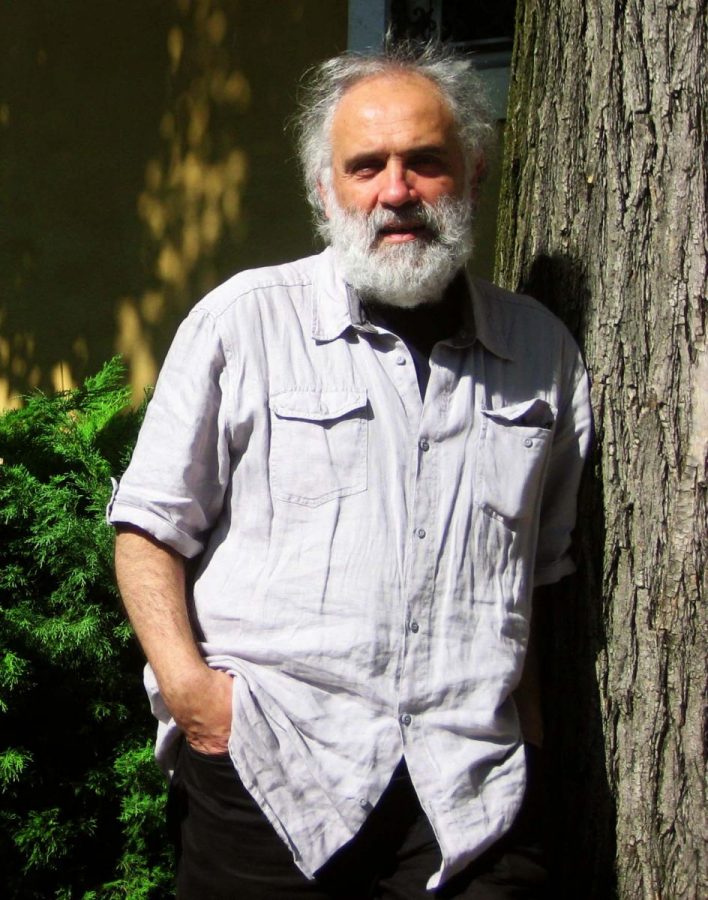
ABOUT
“Just like everybody else, I have my own individual characteristics. The perception of life as a mosaic is one of these. It is not the picture that consists of many elements but life itself. Changes, repetitions, feelings, the surreal nature of interconnectedness and expressiveness are attached to everything. All of these elements create a huge number of picture elements. We keep on editing these elements throughout our lives. Until, very slowly, a personal picture is created – our life itself.” (Peter Lajtai)
The works of Peter Lajtai consist of (both conceptually and technically) a very unique world of digital images. The digital photography-based picture creation, chosen by him as a progressive multimedia tool, is the best way for him to reveal to the viewers that distinctive, multi-layered content he perceives from the world. The creation of installations from the digital prints and from different supplementary objects (textile, paper, plastic, metal, glass, etc.) provide him even more tools to emphasize his views on the past, the present and the future.
Lajtai simultaneously views the inside and the outside. He observes the whole picture and the smallest details. He perceives the things in their wholeness. But he firmly believes in the truth and the power of the details. The construction of his images resembles the mosaics. An abundance of details is amassed and arranged in relation to each other according to the artist’s vision. The end result is varied: the wholeness, the illusion of the wholeness, sometimes the incomplete wholeness or simply the abundance of details.
Particular and Universal Symbols
Lajtai’s first digital artworks have been created from photos of Jewish ceremonial objects. He had set himself the goal to create particular fine art symbols of the Jewish sacral objects and find their role and place among the universal symbols of contemporary art. Incorporating the digital image of the tallit (prayer sawl), the prayer-book, the menorah, the matzo of Passover and other religious objects into abstract artworks, Lajtai has created recognizably Jewish, but at the same time essentially universal images. The particular objects have become well-integrated elements of contemporary artworks.
Lajtai’s Jewish symbols represent a culture that, together with the culture of the Christianity, has become the fundament of the European civilisation. It is the indisputable merit of the artist that these symbols are getting more and more acknowledged as contemporary fine art references to the Jewish culture far beyond Lajtai’s studio.
Protest against violence
Peter Lajtai is a socially responsible artist. He is deeply committed to fight against cruelty, humiliation, racism, destruction, antisemitism. His artworks express a very strong protest against any form of violence.
The Holocaust is the equivalent of incomprehensible pain for Peter Lajtai. As a second- generation representative of Holocaust survivors, he is convinced that the descendants have to take the responsibility for keeping the memory of the victims alive. Some of his images on this subject are of documentary value although these are not photos taken with cameras on the spot, but remembrance of the tragedy.
The shattered protective glass of his pictures. The barbed wire. The fences of the concentration camps. In recent times, these are the most frequently used symbols in the thought-provoking works of Peter Lajtai. We cannot avoid hearing his message: Pay attention to the warning signs! Remember the victims! Do your best to protect those individuals and groups who are in need of protection!
Chaos
It is not without reason that Lajtai’s works often depict confusion and chaos. Moreover, his works picture a gradually destabilizing world. He is thoroughly concerned about the growing tension among individuals, social groups, regions, etc. The artist observes that the people have even more devices. They live in a constant information overflow. And at the same time, they could have a feeling that the walls are closing on them, their supposed security is disappearing. They understand less and less of the world outside of themselves. For the individuals, the world seems to be too fragile, both in and around themselves.
The Power of Art
In spite of all these devastating tendencies, Peter Lajtai is not a pessimistic artist. He indicates, by means of his artworks, that our choices are still open. Lajtai is working unceasingly hard on his large-scale, profound compositions. His works are both conceptual, and at the same time very impressive, spectacular compositions. Via these artworks, he creates a communication channel to the public. He strongly believes in the power of the art.
Judit Mosoni-Fried
